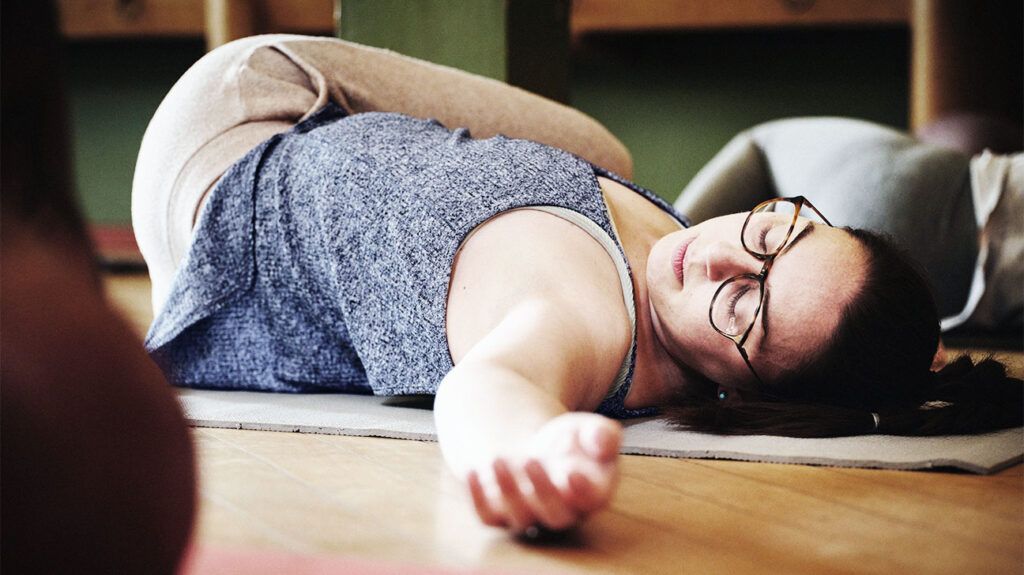Steroid injections can help relieve back pain and reduce a person’s need for surgery. They are typically a safe and effective treatment but do not provide a full cure for the cause of back pain.
Many people with back pain manage discomfort through over-the-counter (OTC) pain medication, stretching, or rest. However, these may not always be effective for more severe or persistent back pain. Steroid injections may help reduce inflammation and pain without the need for surgery.
Depending on a person’s level of pain and the underlying cause, they might need one or several steroid injections over the course of 1 year. They may need injections into different joints or nerves depending on the underlying condition and the areas where they are experiencing pain.
This article discusses what individuals can expect from steroid injections for back pain.

A steroid injection can help people with pain that starts in the back and spreads to an arm or leg, known as radicular pain. This type of pain often occurs due to a pinched nerve.
Spinal injections do not always contain steroids and might sometimes only provide an anesthetic to numb the affected nerves. However, the injection might provide steroids such as cortisone if nearby inflammation is pressing on the nerve and causing pain.
A healthcare professional may recommend steroid injections for the
- non-specific radiculitis, which refers to symptoms of a pinched nerve
- bony lumps that press on the nerve roots of the spine, known as vertebral bone spurs
- thickening of ligaments and soft tissue in the spinal column
- pain that can develop after a spinal surgery called laminectomy, known as postlaminectomy syndrome
- a cyst on the nerve root that causes radicular pain
- nerve pain after herpes or trauma
- a compression fracture, in which a spinal disk, or vertebrae, partly collapses and might cause radicular pain
- weakness or stress fractures in the vertebrae
- degenerative conditions, such as arthritis
The site of a steroid injection depends on the type of injection, the source of pain, and the purpose of the injection.
Possible sites may include the epidural space, the facet joints, and the sacroiliac joints.
Epidural space
This is the gap outside the spinal cord’s protective layer. Injections that take place here are called epidurals.
Some directly reduce inflammation in the spinal cord and relieve pressure on the nerve root. Other epidurals aim to numb a particular nerve to diagnose a specific source of pain.
Facet joints
These are joints between the vertebrae at the back of the spine. People with arthritic conditions or injury between the vertebrae who experience middle or lower back pain may benefit from a facet joint injection.
Sacroiliac joints
These joints sit between the base of the spine and the pelvic bones. People who experience lower back pain that spreads to the butt and leg might receive a steroid injection into the sacroiliac joint.
Spinal injections are often safe and effective for back pain relief. However, steroids can cause a range of mild side effects, including:
- flushing and redness in the face
- increase in appetite
- changes to how often a person menstruates
- feeling sick
- diarrhea
- an often temporary blood sugar increase
However, these side effects are generally rare with injections and are more common with oral or topical steroids. They usually get better without treatment.
The injection procedure may lead to direct complications, including:
- bleeding
- infection at the injection site
- injury to the nerves
- arachnoiditis — a painful condition that occurs when one of the spinal cord membranes develops inflammation
- paralysis
- bone tissue breakdown due to reduced blood supply
- headaches
- muscle weakness
- increased pain
However, according to a
Most people tolerate steroid injections well, but some are not suitable candidates for them. These include:
- people who develop an infection at the site of injection
- individuals who have a bleeding disorder
- those who take medications to thin the blood
- people who have high blood pressure or diabetes and do not take medications to manage either
- individuals with a known allergy to anesthetics, contrast dyes, or steroids
The above individuals need to consult a doctor about alternative back pain solutions if a medical professional has recommended back pain injections.
Steroids can cause extreme mood changes and affect hormone production. Therefore, those with a history of mood disturbances or who have concerns about hormone changes may benefit from discussing these with a healthcare professional.
People often ask the following about steroid injections for back pain.
How long does a steroid shot last for back pain?
This depends on the underlying cause and severity of the back pain. According to a
What should you not do after a steroid shot?
People who receive a steroid injection need to avoid receiving a vaccination with a live virus shortly after, as steroids may reduce the effects of the immune system.
People can receive injections of steroids into the epidural space, facet joints, or sacroiliac joints to relieve back pain. They can be effective for those with back pain that radiates into an arm or leg, various stress fractures, different types of nerve pain, and arthritic or degenerative conditions.
Steroid injections may cause mild, limited complications and side effects, including infection and bleeding at the injection site, flushing, increased appetite, sickness, and hormone change. Those with injection site infections, allergies to steroids, or reduced blood clotting need to avoid steroid injections and discuss alternatives with a healthcare professional.
